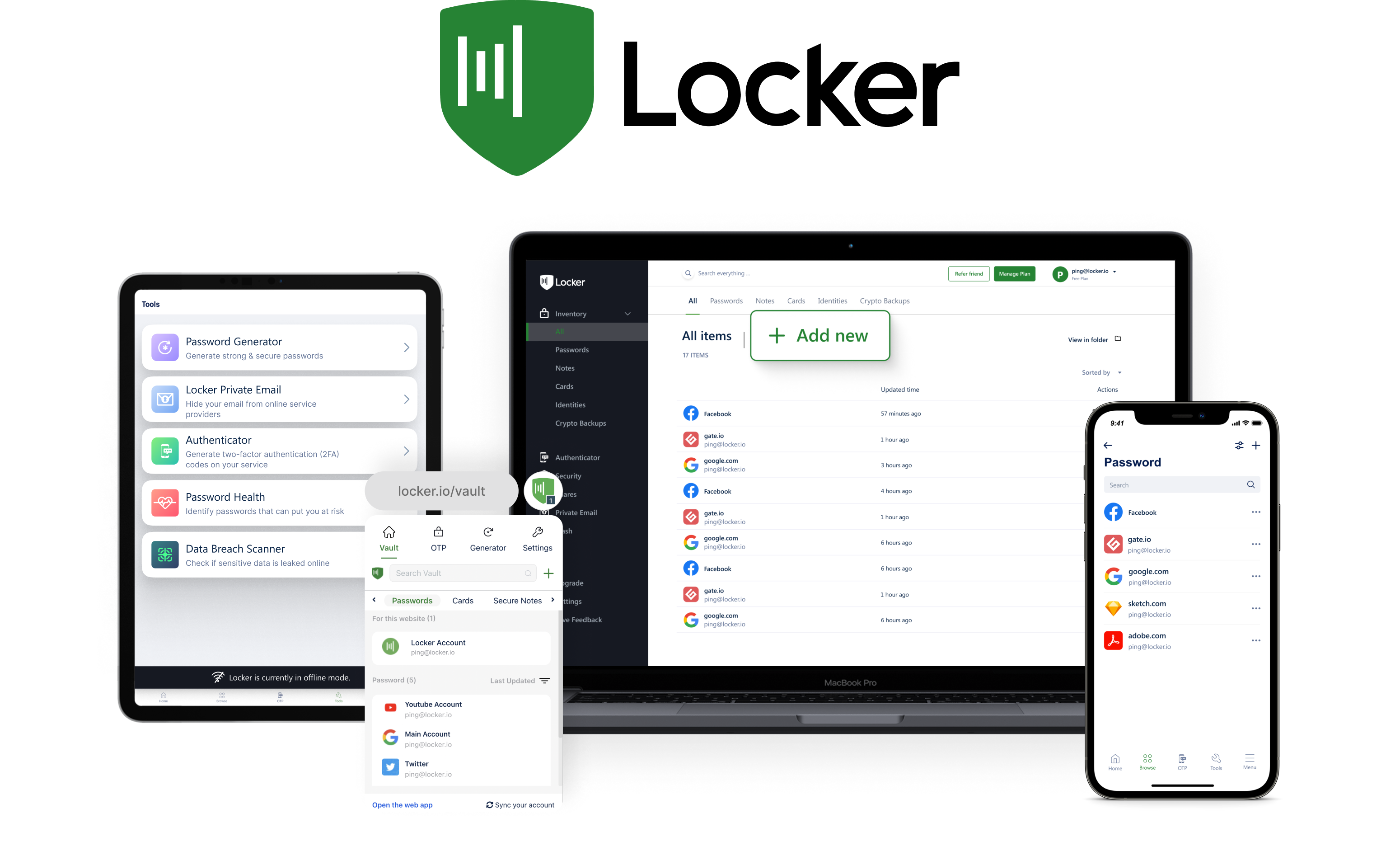https://github.com/lockerpm/core-api
The backend for the Locker Password Manager, an end-to-end encryption software that allows users to securely store and manage their sensitive data and secrets
https://github.com/lockerpm/core-api
backend django django-rest-framework end-to-end-encryption locker password-manager python zero-knowledge
Last synced: 4 months ago
JSON representation
The backend for the Locker Password Manager, an end-to-end encryption software that allows users to securely store and manage their sensitive data and secrets
- Host: GitHub
- URL: https://github.com/lockerpm/core-api
- Owner: lockerpm
- License: gpl-3.0
- Created: 2023-12-06T10:40:43.000Z (about 2 years ago)
- Default Branch: main
- Last Pushed: 2025-08-19T04:38:00.000Z (4 months ago)
- Last Synced: 2025-08-19T06:27:00.417Z (4 months ago)
- Topics: backend, django, django-rest-framework, end-to-end-encryption, locker, password-manager, python, zero-knowledge
- Language: Python
- Homepage: https://locker.io
- Size: 2.52 MB
- Stars: 5
- Watchers: 1
- Forks: 2
- Open Issues: 0
-
Metadata Files:
- Readme: README.md
- License: LICENSE
- Security: SECURITY.md
Awesome Lists containing this project
README

-------------------
## Locker API
Locker API is a project that serves as the backend for the Locker Password Manager, an end-to-end encryption software
that allows users to securely store and manage their sensitive data and secrets. This repository contains the
server-side code and functionalities that enable users to interact with the Locker through API calls.
## Developer Documentation
### Setup Guide
This section will show you how to set up a local Locker server for development purposes.
#### Clone the repository
1. Clone the Locker Server project:
```
git clone -b selfhosted https://github.com/lockerpm/api.git
```
2. Open a terminal and navigate to the root of the cloned repository
#### Config environment variables
1. Copy the example environment file
```
cp dev/.env.example .env
```
2. Open `.env` with your preferred editor.
3. Change your environment variables or use their default values. Save and quit this file.
#### Run local server
1. Use the virtual environment and active the virtual environment
```
python -m venv
```
```
source venv/bin/active
```
2. Install requirements.txt
```
pip install -r requirements.txt
```
3. Run the database migrations and start local server
```
python manage.py migrate
```
```
python manage.py runserver 127.0.0.1:8000
```
Now, the local server will be run at `http://127.0.0.1:8000`
### Database
Locker Server primarily stores data in MySQL. The data access layer uses the Django ORM.
#### Update the database
You should run the `python manage.py migrate` command helper whenever you sync the new version from repository or create
a new migration script.
#### Modifying the database
The process for modifying the data is described in `locker_server/api_orm/migrations` folders.
### Environment variables
1. Databases
- MYSQL_USERNAME: Your Database username
- MYSQL_PASSWORD: Your Database password
- MYSQL_DATABASE: The database name
- MYSQL_HOST: The database host
- MYSQL_PORT: The MySQL port
Example
```
MYSQL_USERNAME=root
MYSQL_PASSWORD=rootmysqlpassword
MYSQL_DATABASE=locker
MYSQL_HOST=localhost
MYSQL_PORT=3306
```
2. Caching
The Locker Server use Redis as caching database
- CACHE_LOCATION: The redis location
Example
```
CACHE_LOCATION=redis://:@127.0.0.1:6379/1
```
3. WebSocket channels
- CHANNEL_REDIS_LOCATION: The redis location to run websocket channel
Example
```
CHANNEL_REDIS_LOCATION=redis://:@127.0.0.1:6379/1?ssl_cert_reqs=none
```
## API Documentation
For detailed API documentation, refer to the [documentation website](https://docs.locker.io/).
## Whitepaper
[Locker Whitepaper](https://locker.io/whitepaper)
## Contribute
Contributions to the Locker API project are welcome! If you find any issues or want to suggest improvements, please
feel free to open an issue or submit a pull request.
Before contributing, please review the [Contribution Guidelines](https://github.com/lockerpm/.github/blob/main/CONTRIBUTING.md).
## License
The Locker API Backend is open-source and released under the [GPLv3](./LICENSE) License. Feel free to use, modify, and
distribute the code as per the terms of the license.